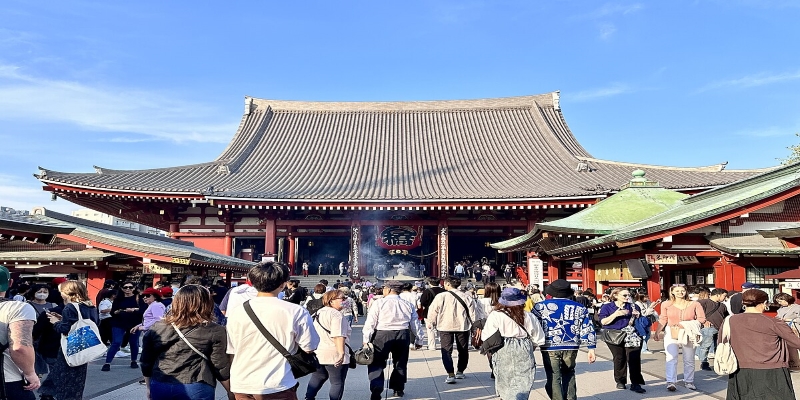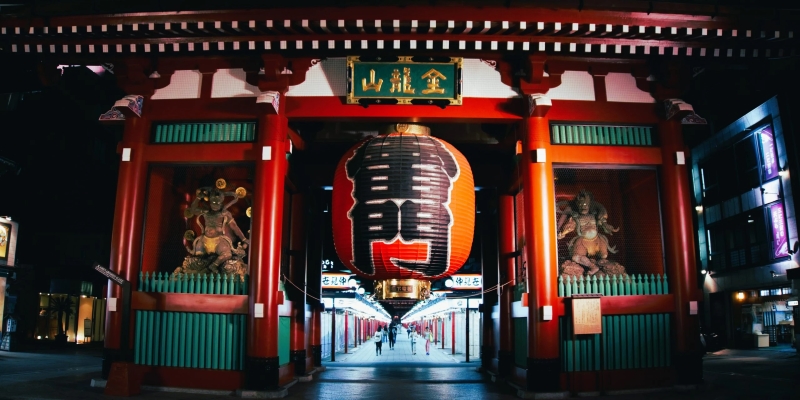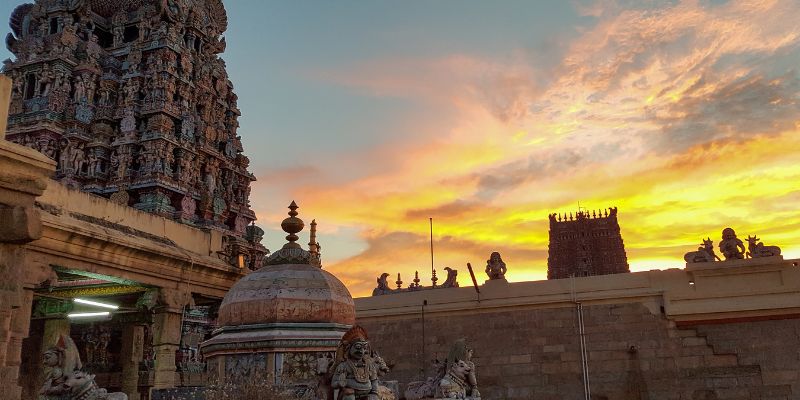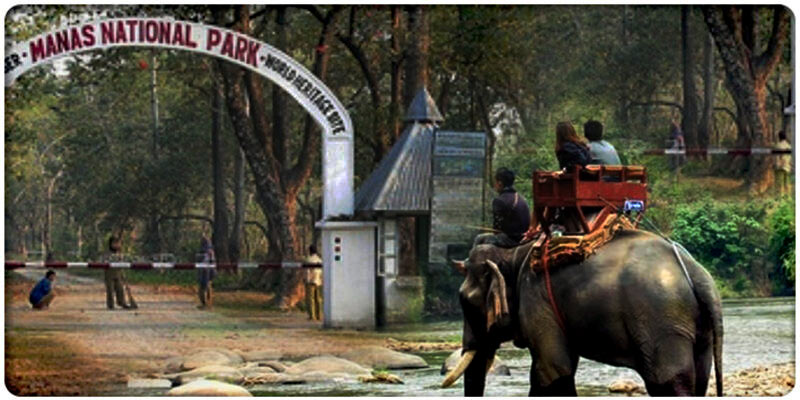Unveiling the Rich History and Charm of Sensō-ji Temple in Asakusa
Aug 06, 2024 By Sean William
In the heart of Asakusa, Tokyo, lies Sens-ji Temple, a revered symbol of Japans rich cultural and spiritual tapestry. Established in 645 AD, this ancient temple is Tokyos oldest, drawing millions of visitors annually. People come not only to explore its profound history and beautiful architecture but also to immerse themselves in the vibrant and dynamic atmosphere that permeates its grounds. From traditional Japanese gardens, which offer a peaceful retreat amidst the urban hustle, to bustling shopping streets filled with local crafts and delicacies, Sens-ji is a microcosm of Japans heritage.
The temple is also a center for numerous cultural events and festivals throughout the year, such as the lively Sanja Matsuri and the serene Hozuki Ichi, making each visit a unique experience. This article explores the diverse aspects of Sens-ji, shedding light on why it continues to be a must-visit destination in Tokyo. Whether you are a history enthusiast, a spiritual seeker, or simply a curious traveler, Sens-ji promises a rich and unforgettable experience.
The History of Sens-ji
Sens-ji holds a great amount of history and we have gathered it for you below:

Origins and Legend
Founded in 645 AD, Sens-ji Temple has a storied past that intertwines with the very fabric of Tokyo's history. According to legend, the temple was established after two fishermen, brothers Hinokuma Hamanari and Hinokuma Takenari, discovered a statue of Kannon, the Buddhist goddess of mercy, in the Sumida River. Despite their attempts to return the statue to the river, it kept resurfacing, leading the local village chief, Haji no Nakatomo, to recognize its spiritual significance and enshrine it. This event marked the founding of Sens-ji and laid the foundation for its enduring legacy.
Reconstruction and Resilience
Over the centuries, Sens-ji has undergone numerous reconstructions due to fires and earthquakes. Each rebuilding effort not only restored the temples physical structure but also reinforced its symbolic significance as a beacon of resilience and hope. The temple complex was notably reconstructed in the late 1950s and early 1960s, with the main hall and pagoda being rebuilt to their former glory. Today, Sens-ji stands as a symbol of resilience and spiritual continuity, embodying the enduring spirit of Tokyo and its ability to rise from the ashes.
Modern-Day Significance
Sens-ji continues to be a pivotal cultural and religious landmark in Tokyo. Its rich history is not just a testament to its past but also a living narrative that attracts millions of visitors annually. The temple grounds serve as a place of worship, a historical site, and a cultural hub, where traditional festivals and daily rituals keep the spirit of ancient Japan alive in the heart of a modern city. This timeless appeal makes Sens-ji a unique and integral part of Tokyos cultural heritage.
The Majestic Kaminarimon Gate
The Majestic Kaminarimon Gate holds a very significant history for enthusiastic:

A Grand Entrance
The first sight that greets visitors to Sens-ji is the imposing Kaminarimon, or "Thunder Gate." This grand entrance, with its massive red lantern and guardian statues of Raijin (the god of thunder) and Fjin (the god of wind), sets the stage for the temple experience. Standing 11.7 meters tall and 11.4 meters wide, the gate is both an architectural marvel and a symbol of the temples grandeur.
Historical Significance
Originally built in 941 AD by Taira no Kinmasa, the Kaminarimon has been a prominent feature of the temple complex for over a millennium. It has undergone several reconstructions due to fires and other disasters, reflecting the resilience of Sens-ji itself. The current structure dates to 1960, thanks to generous donations from Konosuke Matsushita, the founder of Panasonic. This reconstruction not only restored the gates physical presence but also reinforced its cultural and historical significance.
Cultural Icons
The gates massive red lantern, which weighs approximately 700 kilograms, is a striking feature, adorned with the word "" (Kaminarimon) in bold black letters. The statues of Raijin and Fjin add to the gates majestic presence, embodying the protective spirit of the gods. These elements combine to create an awe-inspiring entrance that captivates visitors and prepares them for the spiritual journey within Sens-ji.
Nakamise-dori: A Shoppers Delight
Passing through Kaminarimon, visitors find themselves on Nakamise-dori, a bustling shopping street that leads to the temple's second gate, Hzmon. This street, with its array of shops selling traditional crafts, souvenirs, and snacks, dates back several centuries. Nakamise-dori is more than just a commercial avenue; it is a vibrant corridor that showcases Japan's rich cultural heritage.
Here, you can find intricately designed ukiyo-e (woodblock prints), traditional kimonos, and exquisite Buddhist scrolls. The street also tempts visitors with a variety of local snacks, such as ningyo-yaki (doll-shaped cakes filled with sweet red bean paste) and senbei (rice crackers), providing a sensory feast that complements the visual splendor of the crafts.
Hzmon and the Main Hall
The Hzmon gate, also known as the Treasure House Gate, serves as the grand entrance to the inner precincts of Sens-ji. This impressive gate is a two-story structure, with the upper floor housing sacred sutras and other treasures, while the lower floor serves as a passageway for visitors. Beyond this gate lies the temple's main hall, a place of worship dedicated to Kannon.
The hall is an architectural marvel, featuring intricate carvings, vibrant paintings, and a serene atmosphere that invites contemplation and reverence. The main hall is a hub of activity, where devotees come to pray, light incense, and seek blessings, all while being surrounded by the temples historical and artistic grandeur.
Conclusion
Sens-ji Temple is more than just a historical site; it is a living testament to Tokyo's rich cultural and spiritual heritage. From its iconic gates and bustling Nakamise-dori shopping street to its serene five-story pagoda and the main hall dedicated to Kannon, the temple offers a multifaceted experience that appeals to both the spiritually inclined and the culturally curious.
Throughout the year, Sens-ji hosts vibrant festivals such as the Sanja Matsuri, adding a dynamic layer to its traditional allure. Whether you're participating in a festival, drawing an omikuji to divine your fortune, or simply soaking in the tranquil nighttime ambiance with the illuminated pagoda and temple grounds, Sens-ji provides a unique and unforgettable glimpse into the heart of Asakusa and the soul of Tokyo.

JExploring Hawaii's Most Scenic Spots for a Dramatic Getaway
Journey through Hawaii's picture-perfect locations for a dramatic and unforgettable tropical getaway.

JHow many days in Lombok is enough?
Get ready to explore all that Lombok has to offer! From incredible beaches and national parks to marketplaces and temples - here is your guide to the ultimate adventure in one of Indonesia's best-kept secrets.

JFall in Love with Hague: The City of Peace and Justice
Immerse yourself in the richness of Dutch culture with this insights discussion on The Hague tourism, Netherlands: places, best time and travel guide 2023.

JKnow about Seaworld Abu Dhabi: How To Reach, Best Time and Tips
SeaWorld Abu Dhabi offers an enriching experience that leaves a lasting impression. The park's commitment to conservation and its efforts to raise awareness about marine life is admirable

JWhat are the Top 12 Things To Do in Madurai in 2023
Explore Madurai's rich religion, history, and culture mix. There will be more to see than just its famous sites

JWhich are the Best Picnic Spots in Kolkata
Discover Kolkata's top picnic spots, from Victoria Memorial Gardens to Eco Park and riverside charms with us

J3 Days Goa Itinerary: A Perfect Plan for Sightseeing
This plan will help you see the best of Goa in just three days. It's a trip you'll never forget, from beaches to history

JManas National Park Elephant Safari
The national park is situated in the foothills of the Himalayas and is home to many animals. The park allows you to explore the wildlife by riding on an elephant
 zestinf
zestinf